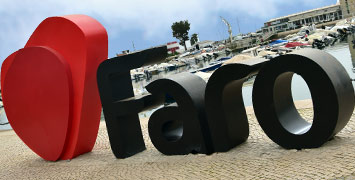Algarve-Tourist.com
The best independent guide to the Algarve
Algarve-Tourist.com
The best independent guide to the Algarve
3 days in Faro - A suggested Itinerary and tour
If you're planning a trip to Portugal's Algarve region, don't make the mistake most tourists do by rushing past Faro. As the capital of the Algarve, this laid-back city offers something totally different from the big resorts further along the coast. Here you'll find a real, working Portuguese city where locals outnumber tourists, restaurants serve authentic food, and the beaches remain wonderfully undeveloped.
For many visitors Faro remains one of their favourite cities in the Algarve. It's a place where you can walk through cobbled streets inside medieval walls in the morning, take a boat trip through peaceful lagoons in the afternoon, and finish your day eating incredibly fresh seafood while watching the sunset over the marina.
Faro is perfect for travellers who want to experience the real Portugal. The city has deep roots - you can see traces of its Roman and Moorish past everywhere you look - but it's also a vibrant and modern city.
This guide provides a carefully planned three-day itinerary for exploring Faro, suitable either as a short break or as part of a longer tour of the Algarve.
Faro in 3 days Overview
Day 1 Morning - Historic Centre of Faro
• Visit the Sé Cathedral and climb its tower for panoramic views
• Wander the medieval city walls and ancient gate, including the decorative Arco da Vila
• Relax in the tranquil Largo da Sé surrounded by historic architecture and orange trees
Day 1 Afternoon – Modern Faro
• Marvel at the baroque Igreja do Carmo church
• Visit the Capela dos Ossos, a macabre bone chapel containing the remains of over 1,000 skeletons
• Stroll through the shopping district around the Rua de Santo António
• End your day with sunset cocktails at RoofTop Eva, enjoying panoramic marina views
Day 2 - Parque Natural da Ria Formosa
• Explore this protected lagoon system on a guided boat tour, visiting the Ilha Deserta and traditional fishing community of Ilha da Culatra
• Navigate the calm waterways at your own pace by kayak or paddleboard
• Take a water taxi to explore your choice of the barrier islands
Day 3 – Beach Day or Historic Trip to Estoi
• Beach Day - Spend the day at Praia de Faro, a glorious sandy beach that stretches for 5km.
• Historic Estoi - Take a trip to the charming village of Estoi, located 10km north of Faro. Here you can visit two significant sites:
- The Milreu Roman ruins, featuring well-preserved mosaics and the remains of a 2nd-century villa.
- The Palácio de Estoi, a beautifully restored 19th-century palace that now functions as a luxury hotel.
Alternative Itinerary
If this is your only time in the central Algarve region, consider this alternative itinerary to explore more of the area:
Day 1 - Historic centre of Faro (including the cathedral and bone chapel)
Day 2 - Parque Natural da Ria Formosa or beach day at the Praia de
Faro
Day 3 – Day trip to either:
• Olhão - a traditional fishing town with pretty waterfront (guide to Olhão)
• Loulé a bustling market town centred around its famous covered market hall (guide to Loulé)
Both towns are easily accessible by public transport
The interactive map below shows the location of the main sights within Faro (green markers) and of the surrounding region (yellow markers). Note: Zoom out to see the yellow markers.
Sights of Faro (green): 1) Se cathedral 2) Capela dos Ossos (bone chapel) 3) Arco da Vila 4) Jardim Manuel Bivar 5) City walls 6) Arco do Repouso 7) Igreja do Carmo 8) Museu Municipal de Faro 9) Fishing harbour 10) Faro Municipal Market
The best of the Faro region (yellow) 1) Parque Natural da Ria Formosa 2) Ilha Deserta 3) Kayak or SUP tour of Ria Formosa 4) Praia de Faro beach 5) Estoi Palace 6) Ilha da Culatra 7) Ruínas Romanas de Milreu 8) Cabo de Santa María 9) Forum Algarve (shopping) 10) Ilha do Farol
Detailed guide to three days in Faro
Day 1 Morning: The Historic Heart of Faro
Faro's historic quarter, the Cidade Velha (Old City), stands as one of the Algarve's most authentic and well-preserved medieval centres. Protected by ancient walls that have stood for over 2000 years, this district offers visitors an immersive journey through Portuguese history, where each street and building tells a story of the city's Roman, Moorish, and Christian heritage.
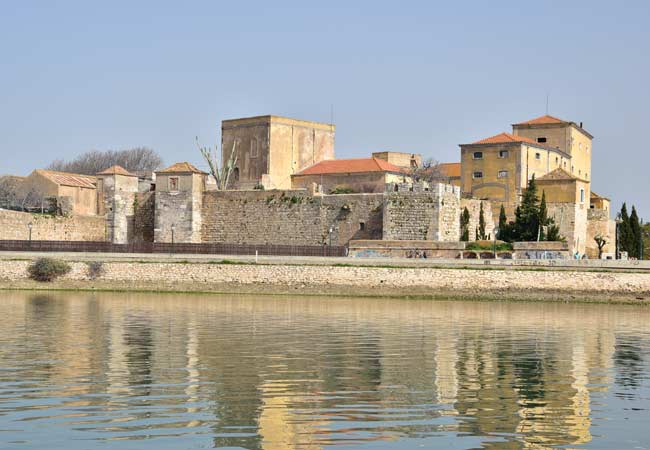
Behind the imposing medieval walls, visitors discover a maze of cobbled streets and squares that echo with over two millennia of history. The district houses Faro's most significant monuments, each offering unique insights into the city's rich past.
The Arco da Vila serves as the grand entrance to Faro's old city. This monumental gateway represents a fascinating blend of architectural styles - its elegant neoclassical design from 1812 frames an original 11th-century Moorish archway within. This unique combination perfectly symbolizes how Faro's different cultural influences have merged over centuries rather than simply replacing each other.
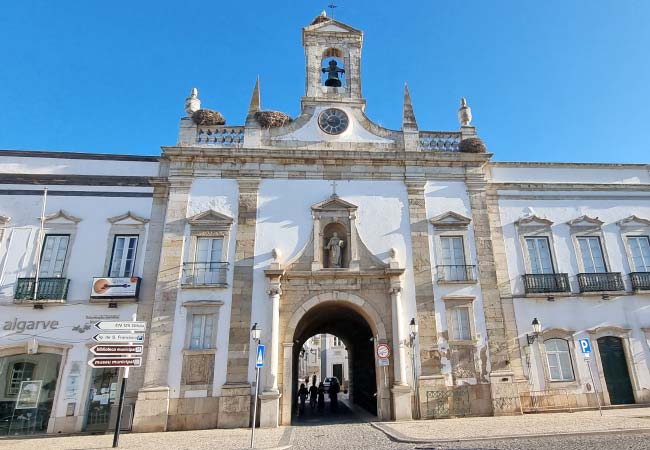
Beyond the arch lies the Largo da Sé (Cathedral Square), which forms the physical and spiritual center of historic Faro. This elegant plaza, surrounded by historic buildings including the Episcopal Palace, provides visitors with a perfect example of a traditional Portuguese square. Ancient orange trees provide shade while the surrounding architecture spans centuries of architectural styles, from Gothic to Baroque.
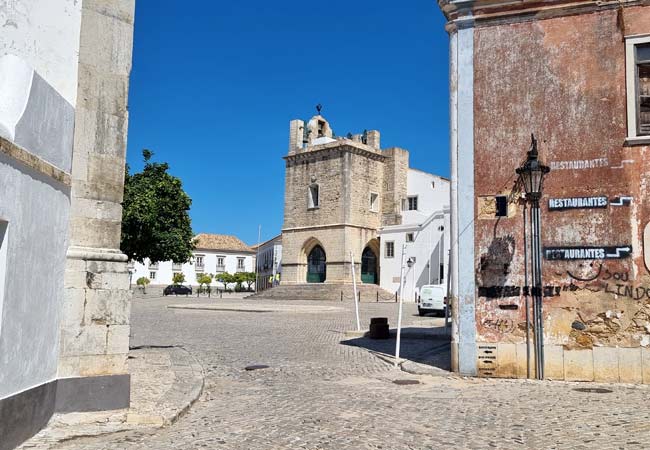
The Sé Cathedral stands as Faro's most significant religious monument. Built in 1251, this remarkable building survived the catastrophic 1755 earthquake that destroyed much of Portugal's architectural heritage. Inside, visitors can admire an exceptional collection of 17th and 18th-century tiles, stunning golden altarpieces, and a unique organ decorated with Chinese motifs - a rare example of the artistic fusion between European and Asian styles that occurred during Portugal's Age of Discovery.
The cathedral's tower offers the region's finest viewpoint. From here, visitors can appreciate Faro's strategic position between land and sea, with views extending across the terracotta roofs of the old town to the Ria Formosa lagoon system and barrier islands beyond. This perspective helps explain why this location has been prized by settlers from the Romans onwards.
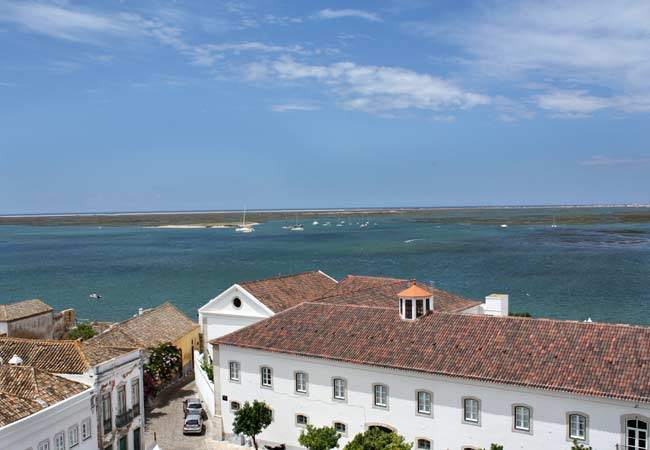
The city walls encircling Cidade Velha represent one of the Algarve's best-preserved medieval fortification systems. The Arco do Repouso (Arch of Rest) stands as one of their most historically significant features. This gateway marks where King Afonso III reportedly rested after liberating Faro from Moorish rule in 1249, marking a pivotal moment in Portuguese history. The arch serves as a reminder of the Christian reconquest that would reshape the Algarve's cultural landscape.
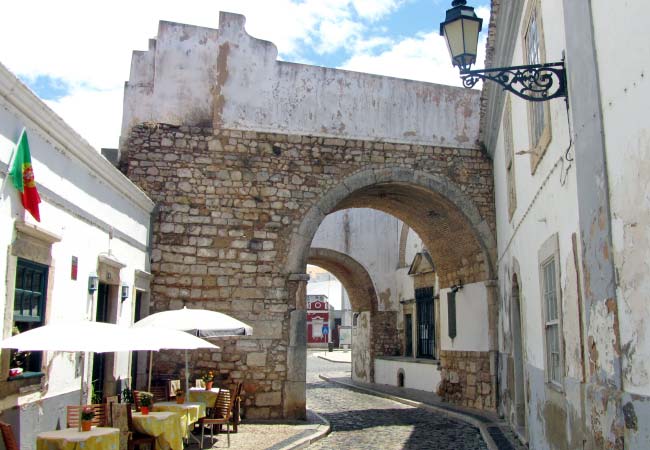
Day 1 Afternoon: Beyond the City Walls
Outside Faro's medieval walls, the city's baroque and modern quarters offer visitors equally compelling attractions that showcase how Faro evolved beyond its ancient core.
The Igreja do Carmo stands as one of Portugal's finest examples of baroque architecture. Built in the 18th century, this twin-towered church dominates Faro's skyline with its ornate facade. The church's interior dazzles visitors with its gilt-covered woodwork and hand-painted tiles, but its most remarkable feature lies behind the main building - the famous Capela dos Ossos (Chapel of Bones).
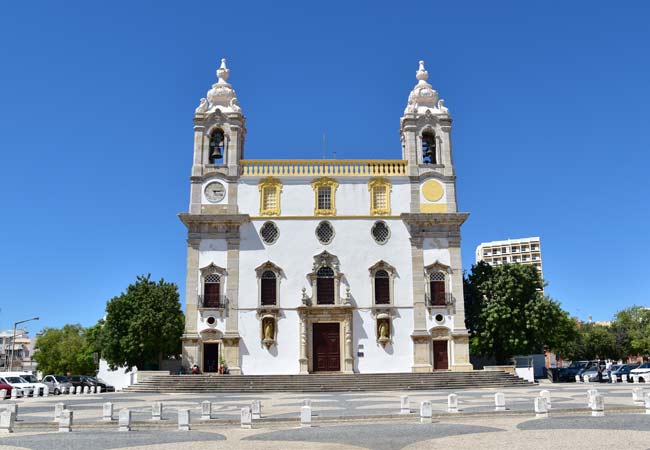
The Capela dos Ossos offers visitors a unique, if macabre, experience. Created by monks in 1816, the walls and ceiling of this small chapel are entirely lined with the bones and skulls of over 1,000 monks. While this might seem gruesome, the chapel was built with a profound purpose - to prompt visitors to reflect on life's impermanence and the equal status of all humans in death. The inscription above the entrance reads "Stop here and think of the fate that will befall you" - a message that has given pause to visitors for over two centuries.
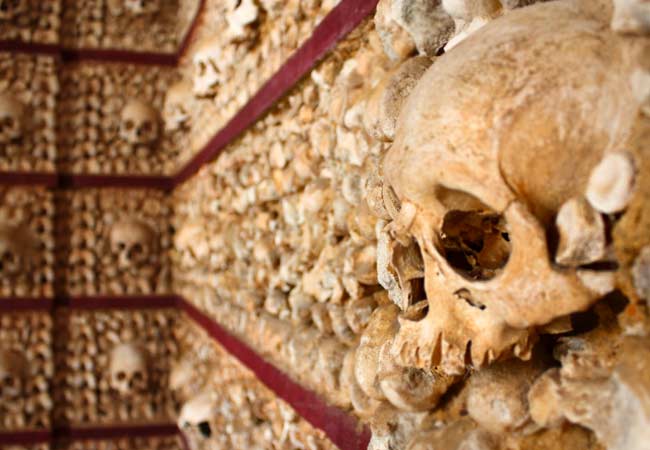
The bustling Rua de Santo António represents the heart of modern Faro. This pedestrianized shopping street perfectly balances traditional Portuguese commerce with contemporary retail. Here, family-run shops that have operated for generations sit alongside modern boutiques. The street retains its traditional Portuguese character with beautiful tile-work and wrought-iron balconies adorning many buildings.
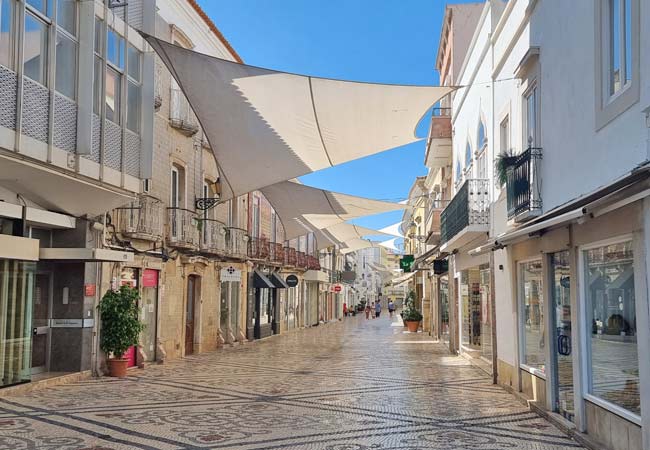
As evening approaches, the Manuel Bivar Garden and marina area come alive. This waterfront district offers visitors a different perspective on Faro, where they can watch fishing boats return with their daily catch while pleasure craft head out into the lagoon. The garden, with its palm trees and traditional bandstand, provides a pleasant spot to rest and watch local life unfold.
For the perfect end to your day, the RoofTop Eva at the Hotel Eva offers what many consider the finest views in Faro. From this vantage point, visitors can appreciate how the city's historic and modern quarters blend together, while watching the sun set over the Ria Formosa lagoon. The view spans from the medieval old town to the barrier islands beyond, offering a fitting conclusion to a day exploring Faro's many facets.
Day 2: Discovering the Ria Formosa Natural Park
The Parque Natural da Ria Formosa stands as one of Portugal's most remarkable natural wonders. This protected lagoon system stretches for 60 kilometers along the Algarve coast, creating a unique ecosystem of channels, islands, and wetlands that shelter an extraordinary diversity of wildlife.
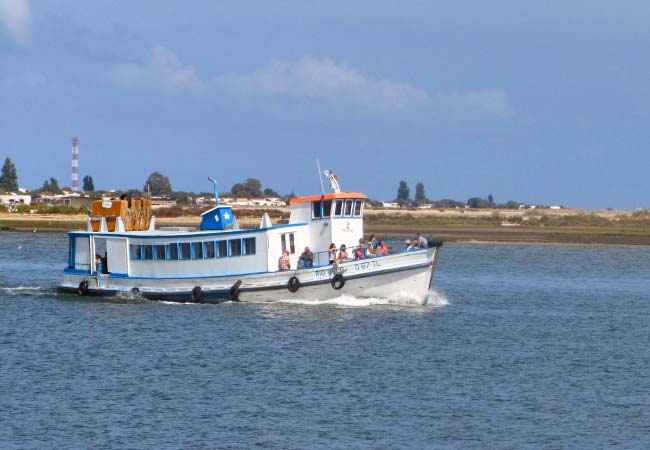
The park encompasses a series of barrier islands that protect the mainland from the Atlantic Ocean. These pristine islands, accessible only by boat, offer visitors an experience that feels worlds away from mainland Portugal. Each island has its own distinct character, from uninhabited nature reserves to small fishing communities that maintain traditional ways of life.
Ilha Deserta (Desert Island) lives up to its name as the only completely uninhabited island in the system. This untouched sanctuary stretches for seven kilometers, offering visitors pristine beaches and the chance to spot rare seabirds in their natural habitat. The island's lighthouse, Farol do Cabo de Santa Maria, marks continental Portugal's most southerly point.
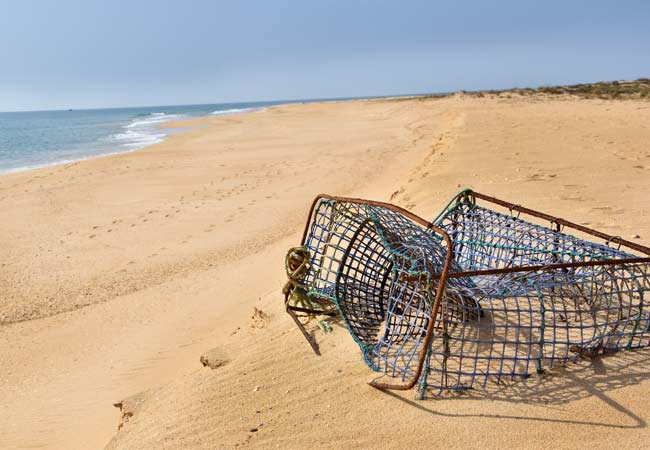
The Ilha da Culatra presents a fascinating contrast to Deserta's wilderness. This inhabited island hosts a traditional fishing community where visitors can experience authentic Algarve coastal life. The village of Culatra, with its wooden boardwalks and fishermen's cottages, provides insight into a way of life that has remained largely unchanged for generations. Here, visitors can sample some of the region's finest seafood in simple restaurants that serve fish caught that morning.
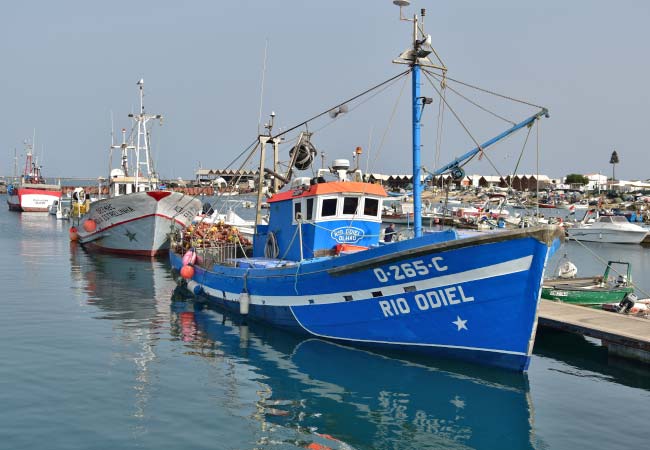
Exploring the park's intricate network of channels reveals a remarkable aquatic ecosystem. The calm, shallow waters between the islands create perfect conditions for observing the park's rich marine life. Visitors might spot seahorses (one of the largest populations in the world), various species of fish, and numerous birds including flamingos and the rare purple swamphen. These protected waterways serve as both a vital marine nursery and an important stopover for migrating birds.
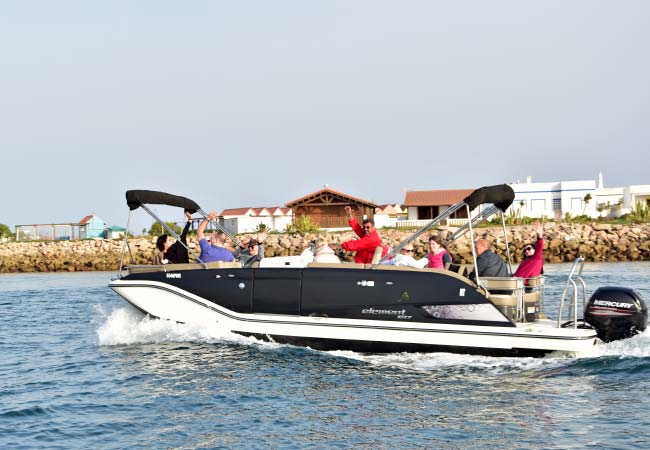
A boat tour offers the perfect introduction to the Ria Formosa's natural wonders. These excursions visit multiple islands, where you can discover pristine beaches, traditional fishing communities, and unique wildlife. Local guides share fascinating insights about the protected lagoon system's ecosystem, while stops at various islands provide opportunities to swim in crystal-clear waters, spot rare birds and marine life, and experience authentic Algarve coastal culture firsthand.
Day 3: Beach Relaxation or Historical Discovery
For your final day, Faro offers two distinctly different but equally rewarding experiences - a day of seaside relaxation or a journey into the region's rich past.
Praia de Faro presents visitors with five kilometers of golden sand, where the calm waters of the Ria Formosa meet the rolling waves of the Atlantic. This expansive beach offers the perfect setting for a relaxing final day, with plenty of space to find a quiet spot away from the summer crowds. The beach's unique location on a peninsula means visitors can choose between the lagoon's tranquil waters on one side and the Atlantic surf on the other. Traditional beach restaurants serve fresh seafood and local specialties, making it easy to spend a full day here.
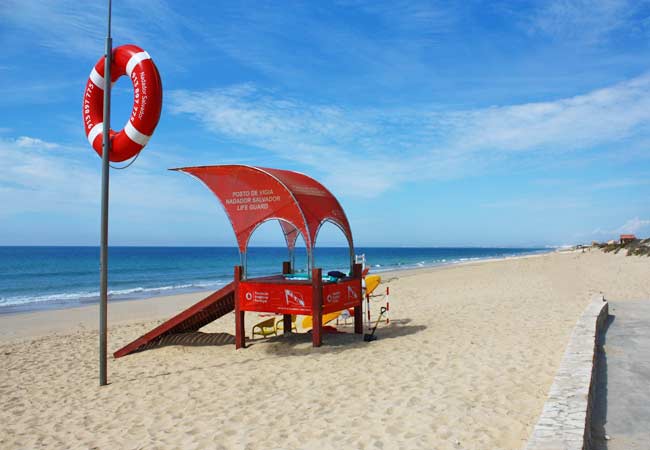
Alternatively, the historic village of Estoi, just 10 kilometers north of Faro, provides a fascinating glimpse into both Roman and Portuguese heritage. The Milreu Roman Ruins rank among Portugal's most significant Roman sites, featuring exceptionally preserved mosaics that hint at the luxury of this 2nd-century villa. The intricate floor designs depict marine life and mythological scenes, while the remains of the villa's private baths and temple complex reveal the sophistication of Roman life in the Algarve.
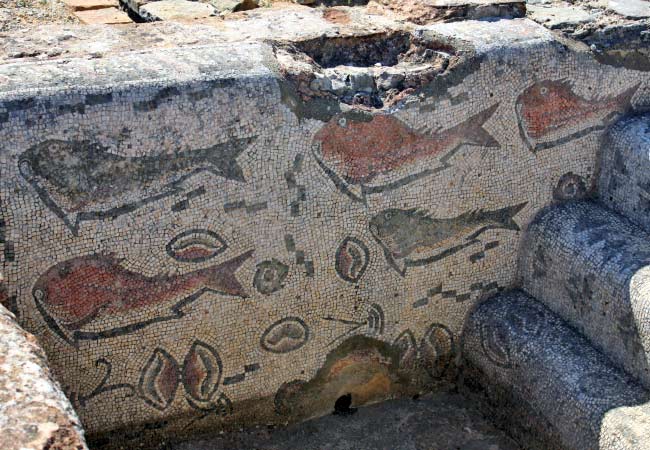
The Palácio de Estoi stands as a masterpiece of Portuguese Rococo architecture. This pink-hued 19th-century palace showcases elaborate decorative tile work, ornate frescos, and perfectly manicured French-style gardens. Now operating as a luxury hotel, the palace welcomes visitors to explore its public areas and gardens, offering a glimpse into the grandiose lifestyle of Portuguese nobility. The palace's recent restoration has preserved its historic charm while adding modern comforts, making it an ideal spot for a memorable lunch in regal surroundings.
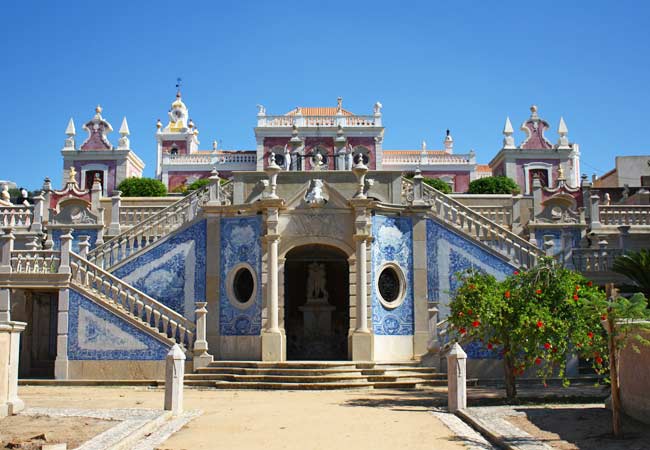
The beautiful “azulejos” tiles of the Palácio de Estoi gardens
Our most popular guides for Faro and the Algarve
All of our guides to the Algarve





















